|
Last weekend I attended the New Scientist Live event, in the ExCel Centre, London. There was a lot to see and a lot of people to see it; the air buzzed with voices and noise. Here's a few exhibits that sparked my imagination. As I said to my friend, you can't put a price on the feeling of inspiration - that's why I love science. Virtual Reality is amazing. Sensory Reality is astounding. SENSIKS offers a virtual experience that caters to all five senses, combining them into a 'sixth' full sensory experience. Visitors outside the SENSIKS booth queued impatiently; left with dreamy smiles on their faces and wistful remarks that their time inside the booth had passed too quickly. I spoke with Fred Galstaun, the CEO - see a short video below, and watch if you can spot him doing the logo for SENSIKS. More about the company and their platform on their website.  Another booth, holding a small cinema, was Axiom. Axiom is a refresh of traditional healthcare debates through a sci-fi and storytelling medium. Visitors to the Axiom booth could settle down to watch a short film about a lost, lone astronaut in space. You can watch the film on their website here. With mounting fear, calling out to Mission Control, struggling to grasp control of her situation, the astronaut represents a patient in the healthcare system. How much are Mission Control willing to spend on bringing her home? What decisions should they involve her in? What resources do they have to use? I thought this was a great idea - a way to refocus and explore a sensitive issue that involves many players. Axiom also invite you to share your own story of triumphs or struggles in healthcare, which could be featured on their website. This is Axiom. Life. Above all else. Back when I was a researcher for BBC Learning, one of my tasks was to make a detailed report of the new Computing curriculum. Of course the problem was that there was no Computing curriculum! Plans were moving ahead to bin the outdated IT / ICT curriculum (anyone else remember anything from their IT lessons other than blinding tedium and clicking of MS Word? Indeed) but there was no official Computing curriculum. The way it looked was that in autumn 2012, schools were going to start rolling it out... and it was up to their staff to implement it. There were a lot of passionate advocates of teaching computing, coding, and real programming skills to young people though, so I found a lot of optimism out there and even felt envious of the lucky students approaching this new age of mad computing skillz. (Still, some opinionistas believe it's just a cynical push to drag down high wages rather than modernise education for the 21st century). The push goes on, and the tools just get better and better. Take NOVA. A DIY Artificial Intelligence Robot. And I thought home CRISPR kits were a perfect example of hi-tech biohacked for the public. NOVA is being developed by Creoqode, who have also developed an open source game console for you to program games on. These things aren't just for kids, but they are cheap enough, accessible enough, and fun enough for kids to learn. And they're bringing retro-gaming into the modern technology, by putting its creation literally in your hands. I like to imagine an unspecified time in an alternative reality future, calling out to my offspring down in the American-style capacious basement we inexplicably have (guess I'm living in America). I'll have bought him a few hijinks and gadgets off Kickstarter, let him order a few innocuously ingeniously designed electronic AI projects, as you do... "What are you doing down there, little Johnny?" "Er..." "Oh nothing Mom..." iHuman. What is it to be human? This disruptive research institute at the University of Sheffield takes on this question. I didn't see fully what they had on display, but their leaflets were interesting. Their website hosts an eclectic range of events from multiple research projects. In particular, they want the public to chime in with their experiences of living with learning disability under austerity cuts in today's society. AugmentifyIt - As we swirled out with the dregs of the crowd on the final day, someone flagged us over. There was time for them to fire up two more sparks of inspiration. AugmentifyIt presents Augmented Reality learning designed for young children from 3+, using cards you need to buy and a free app. The presenter showed us a quick glimpse; in a casual wave of her phone over a card, a miniature, beautiful spinning galaxy appeared in the unreality of Augmented Reality. I also remember researching this at the BBC back in 2012, but back then the examples I found consisted of brightly coloured blocky 3D structures floating in the air. But even Pokemon Go shows the technology has come on in leaps and bounds. No, I've not played Pokemon Go. I hear it's silly. And addictive. Rehabilitation Gaming System create VR games to rehabilitate patients who have suffered brain damage. Their system is already used in hospitals daily by stroke patients. Updates from the Human Brain Project - six ICT platforms including the Neurorobotics platform and Medical Informatics. Stuck for a Christmas present? Micro Drones! We're all going to be under surveillance anyway, right?
0 Comments
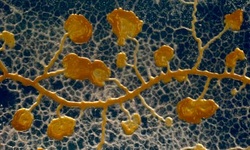 I like slime moulds, and so should you. Let me convince you. Slime moulds seem to bridge the gap between fungi and animals. In a nutshell, they are a glistening goop that spreads and develops in a webbed network of frilly fingers. But this is an intelligent goop. Slime moulds respond malleably to their environment. They can work out the most efficient shape to morph into in order to reach multiple food sources. Scientists have shown this ability compares favourably to some of the most efficiently planned human transport systems. When times are hard, the slimes can change form to produce fruiting spores, sending its spores away to find better lands. When two slime moulds of the same species meet, they join forces into one large super-slime. Best of all, they seem pleasantly benevolent compared to many other microorganisms. No slime mould has yet proved itself to be a human pathogen. And they not only eat bacteria, they farm it. So slime moulds are a wonderful piece of the biodiversity puzzle around us. And we're slowly getting to know more about them. They have cropped up in the 2010 Ig Nobels, for instance. But there are some incredible combinations of man-made technology meeting nature, like fabulously weird experiments using slime moulds as living computing interfaces (quick translation: cyborg technology). Andrew Adamatzky's group at the University of West of England have almost given slime moulds a human face. And on 27th January 2013, I attended an exhibition of slime moulds and 3D printing. It was an interdisciplinary event hosted by the Waag Society, an arts-meets-sciences-meets-design sort of incident. While the supposed schism of the arts and sciences has long been debated and reinvented to zombified death, introducing 'design' as part of interdisciplinary events has crept in on the tides of 21st century technology. The exhibition showcased the results of a two-day workshop where participants designed with slime moulds and 3D printers. This was to be my first visit to the Waag Society, institute for art, science and technology, and I'll admit, I was wary. I hardly knew much about 3D printing on a small-scale, and how could you design with a living organism? To prepare myself for disappointment, my pessimistic mind conjured up images of an exhibition space containing conceptual sculptures splashed 'artistically' with slime mould goop. There might be a lot of dainty talk using inaccessible artspeak. In short it could be all show, no engagement. But there was no need for these pessimistic thoughts. There was plenty of show and plenty of engagement. The beautiful old Waag building is an excellent space for science-related public events. The winding staircase, curved walls and old architecture-style is fertile ground for imagining classical scientists pursuing their work. For the Romantics, where else should you be bringing new creations to life, other than at the top of a wood-panelled, historical tower? Indeed Rembrandt immortalised dissections carried out in the Waag. Inside there was a healthy mix of public, scientists, and designers. A few small tables showed the results of the two-day Bio-Logic workshop. A table held a couple of stewpots serving as simple incubators, and another held an array of petridishes containing yellowish agar and seeded with slime mould spores. A few computers with coding programs. A 3D printer in a modified box which served as a sterile cabinet.
Afterwards, scientists, designers and public mingled to discuss ideas and ask questions. I loved thinking of the little flake of slime mould spore material in their dormant state. Ostensibly dry and dead to the eye, but merely waiting. Sensing their surroundings. Unfurling, slowly, responding. Molecular mechanisms begin to cascade, moisture is drawn up. The machinery unfolds. The mould becomes a mobile slime again and reaches for food. I learned more about the slime mould being used, Physarum polycephalum. It can move as quickly as one centimetre an hour. The giant cells it forms are called plasmodia, and contain several nuclei. As in any microbiology lab, contamination is an ever-present problem and can ruin carefully constructed petridishes, but sometimes slime moulds have used the invading growths of fungi as a scaffolding to climb out of the petridish. The moulds can also lay down a trail of physical 'memory'. They can leave crystals behind as chemical signals, marking where they have explored. They can also keep time. When researchers exposed a slime mould to a pattern of regular temperature changes, it learned to anticipate these environmental changes. One visitor asked if the slime moulds could be used to make a 'circuit switch'. And the scientist's answer? Yes! See here for more information. A hacked 3D printer designs structures out of organic material, and the slime moulds redefine these structures. It's a start of a design exploration, bringing together technology and living matter.
So what do these slime moulds look like in action? You can watch a beautiful time-lapse video here. I'm watching a man play music with his butt. When I woke up this morning, I had no idea my day would end like this. We the hushed crowd examine the large projection before us. Dani Ploegar stands naked and proud on a blue-tiled floor, his back turned towards us, the top half of his body cast mysteriously in silhouette whilst a soft, gold-tinted light frosts his legs and muscular buttocks. In his butt he has secreted an Anuform anal electrode, and falling away from that hidden egg is a long cable connected to a modified Peritone EMG sensor. These commercial medical devices were developed to treat incontinence by enabling users to exercise their rectal muscles. But Dani is using them for art. He is working his sphincter to a specific beat, performing an extremely rare combination of falsehood and carnal pleasure. For he is faking a male orgasm, clenching his muscles to mimic the rhythmic contractions of pleasure, which Anuform and Peritone channel into a synthesiser to produce digital sound. Whooping wails and musical howls warble out from the sound generator, the sound of alien tentacles mopping a floor of microphones, an electronic heavenly chorus in grief. His performance, Electrode (2011), is unlike anything I've ever seen, heard, or considered before. But how does he know how to move his butt? Dani is actually replicating a recorded sphincter contraction pattern from an anonymous male subject, who duly masturbated himself to orgasm as part of a 1980s study. Dani, a performance artist and lecturer at the Central School of Speech and Drama, subverts the scientific data and devices into something new and unforgettable.  It's so bizarre that we are all quietly awestruck. And I love Dani's earnest and serious delivery as the man himself talks to us here at the Waag Society in Amsterdam, a public institute to explore science, art and technology. It's another pleasant and crowded Do-It-Together Workshop, and tonight's topic is Neuro Cyborg. Now that the bizarre has truly been crossed, there is nothing else to do but lean back and appreciate the art. I've already done my bit earlier this evening. I made an insect biomechatronic. 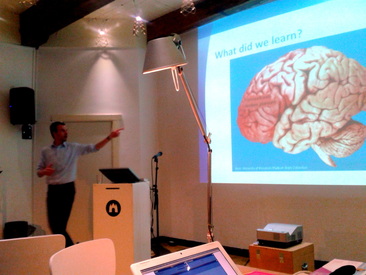 The evening had begun with a quick introduction to brain imaging by Martijn Steenwijk, PhD student at VU University Medical Center. Martijn, a specialist in medical imaging of the brain, explained some of the technology used today to look into the brain's activities. It seems to me, naive 80's child, that imaging technologies have been used for years to peer into the brain. The images are still fuzzy and no one can be quite definite what an area of brightly lit activity really signifies. But bit by bit, there is more to be said from the pictures, because there are more ways to string the data together. While working for the European Grid Infrastructure I have learned about the development of The Human Brain project, a virtual brain that will be built using colossal computing power and data from thousands of brain scans. It is clear that supercomputing is the crucial tool to tell us more about the brain by building a working simulation of nerve impulses, not just new scanning technologies to read the brain's shape and activities. 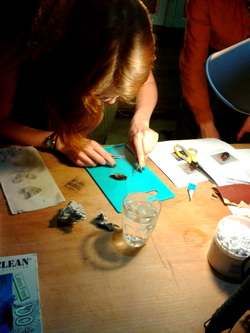 Next we had the opportunity to explore neuroscience ourselves, using the Do-It-Yourself kits of Backyard Brains. Backyard Brains are a start-up group of scientists and engineers, who have created a variety of mini-science kits for students and DIY Biology enthusiasts. The kits can be ordered online and aim to deliver 'Neuroscience for Everyone'. You can, for instance, order a 'Spikerbox' to listen to nerve impulses or make a cockroach leg twitch in time to an iPod track. You can also create a 'RoboRoach', a $10,000 project that was funded through Kickstarter, which lets you control a cockroach with mobile phone. To make a RoboRoach, you essentially have to cut some bits off a living cockroach and connect its body to some small circuitry and wiring which will convey electric impulses to the roach's nerves. The fact that the cockroaches don't feel pain provides a sop to any uneasy feelings an experimenter might have about doing this, but the concept remains somewhat unpleasant- and so it should. Nobody should experiment with animal models lightly. The launch of the RoboRoach kit generated controversy, and the creators responded to it. “I try not to downplay the fact that in science we use animal models and a lot of times they are killed,” said Greg Gage, one of the co-founders of Backyard Brains. He also points out that the kits teach about the care procedures of scientific animal models. How to anaesthetise the animal, and how to minimise damage from wounds. And when to retire a model to live out its life, or perhaps, be euthanised. Still, Gage acknowledges, “we get a lot of e-mails telling us we’re teaching kids to be psychopaths.” And a quick google shows me plenty of critical news reports lambasting the RoboRoach. Though I see similar arguments employed in each one - the 'wrong people using the wrong treatment', the slippery slopes of 'roach today, human tomorrow', the general unease of making live animal experimentation into a commodity, even if it is a learning tool. The condensed version is this: if you make these kits available to anyone then someone is going to abuse the science. It's the same popular argument deployed against citizen science, biohacking, and DIY Biology movements. While I don't want to dismiss it out of hand, I do think it obvious that with a few replaced words, that dire warning becomes applicable to any field. If you would like to decide for yourself, you can start by watching Greg Gage's TED talk on the RoboRoach, replete with a live demo.  As the talk finished and the practical part of the night began, I found myself at a table with a Spikerbox and a small tank of roaches. We were to cut off a roach leg and use it to listen to nerve impulse 'spikes' using with a neuron amplifier. Someone fished out a roach and dropped it in ice water to knock it out. I shared nervous grins with the others. Who was going to be wielding the scalpel? 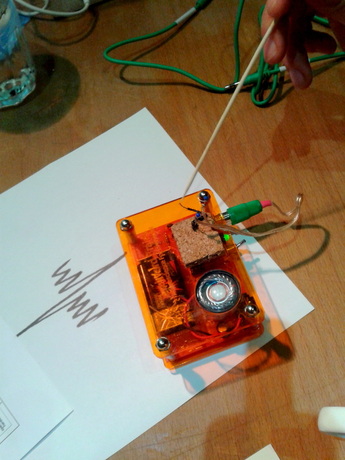 I found myself volunteering. First, I found I wasn't squeamish - I was interested in the science. Second, having handled scalpels and done dissections before, I wanted the responsibility of looking after the roach. Stunned by the ice water, it wasn't going to feel a thing, and provided I cut it in the right place, its only injury would be one missing leg which would grow back within a few weeks. I donned my gloves, picked up a scalpel and zoomed in on the unconscious roach. A few motions, then the roach was put back into the tank to wake up. I hoped that tank life was easy enough to outweigh any living difficulties it might encounter, with one less leg. We then secured the two Spikerbox electrodes into the neuron running through the leg, and plugged the Spikerbox into a smartphone with the Spikerbox app. Manipulating the hairs on the leg tip sent an electric nerve impulse rushing up the limb and past the other embedded electrode, resulting in a crackling and visible spiking depicted on the smartphone. And it really was amazing, to hear a nerve impulse and see it dance upon the screen. We living, conscious beings were all standing around marvelling at simple roach leg nerve impulse thanks to millions of impossibly complex nerve impulses firing in us so we could do the marvelling... but it was the simple roach leg set-up that truly summed up the power of nerve impulses. We jostled for the toothpick to touch the leg, and hear the sound of neurochemistry.  Over on the RoboRoach table, they weren't faring so well at attaching the necessary parts to the roach. Unfortunately, that was one experiment that we didn't get to see. Elsewhere, another table used a Spikerbox to measure human nerve impulses, and then Dani delivered his talk on his sphincter music. After Dani, the final artist was Arthur Elsenaar, presenting Artificial Facial Expression, or Artifacial- a bizarre series of computer-controlled human expressions. Instead of sending bodily nerve signals to an electronic device, like Dani, Arthur inverted this pathway by letting a computer program control his facial muscles. Little electrical impulses are delivered to electrodes patched onto his face and generate a slew of grimaces and twitches. I stared and wondered what on earth this particular juxtaposition of control, electronics and living flesh heralds for our future. I had never considered that we might voluntarily allow robots and electronics to control us, rather than we control them. Then again, isn't deep brain stimulation via electrodes already a pioneering treatment for Parkinson's disease? But what about robotic science and artistic performance? Actually, as Arthur could tell you himself, electronic body performance dates back to the 18th century. 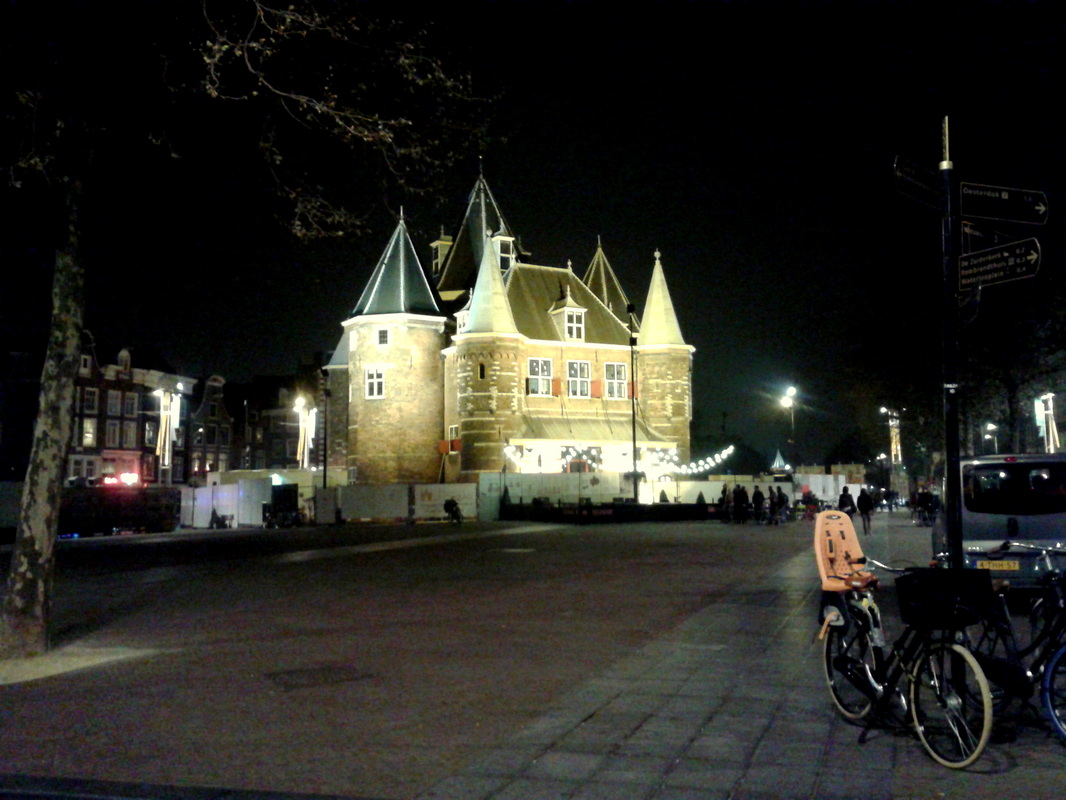 Later on, I cycled back home through the dark streets of Amsterdam. I was thinking, variously, of a cockroach leg, a musical butt, and a computer's face. |
AuthorNot quite a blog, but things that I have written. Please note - these writings are unedited, for the purposes of flexing my fingers, and no doubt contain grammatical errors and carelessness of expression I wouldn't allow in professional writing. Categories
All
Archives
June 2021
|


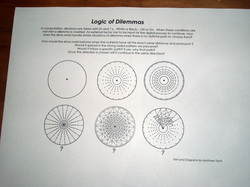
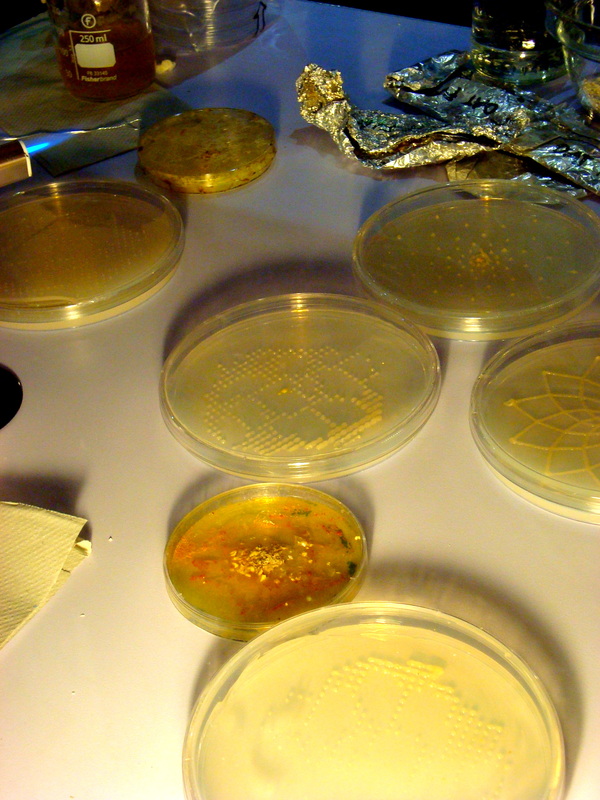


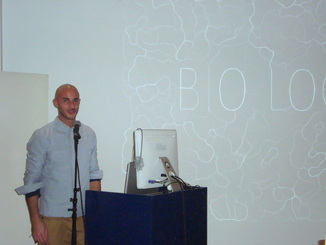


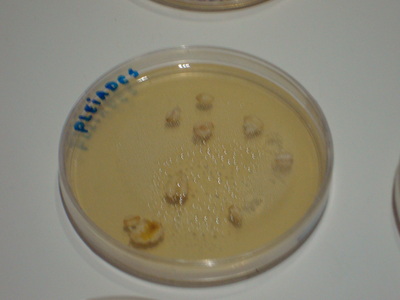
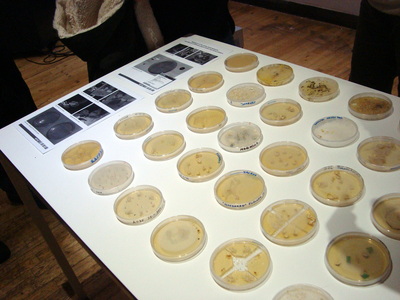
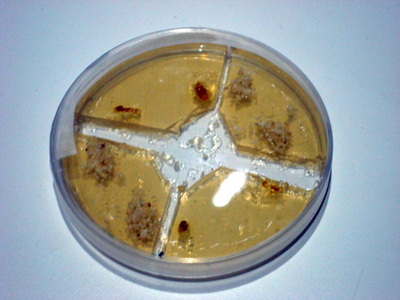








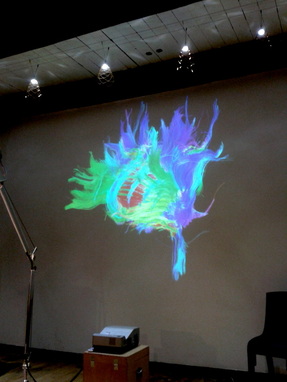
 RSS Feed
RSS Feed
